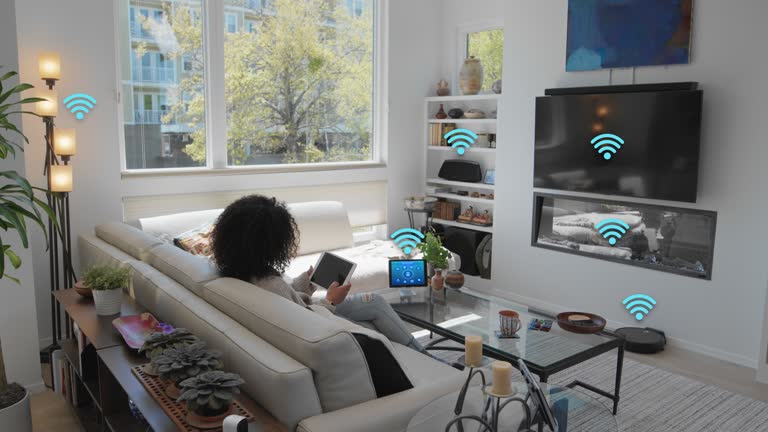
Sustainable Automation for Families: A Green Living Guide
Share
In the ever-evolving world of technology, the concept of sustainable automation for families is rapidly gaining traction. As tech professionals and enthusiasts, the challenge lies in integrating smart technologies into our homes to create an eco-friendly yet efficient lifestyle. This transformation not only benefits the environment but also enhances the quality of life for families around the globe.
The notion of sustainable automation isn't just about adopting the newest gadgets; it encompasses a broader vision of sustainability, energy efficiency, and smart resource management. With the rise of climate change awareness, families are increasingly looking towards automation that minimizes environmental impact while maximizing convenience and cost savings.

Understanding Sustainable Automation
Before diving into the specifics, it's crucial to understand what sustainable automation truly means. At its core, it involves integrating smart home technologies that reduce energy consumption, lower carbon footprints, and promote sustainable living. This can range from automated lighting systems that adjust based on natural light availability to smart thermostats that optimize heating and cooling.
For those eager to explore this further, a comprehensive understanding can be found in articles such as ROI on Sustainable Home Automation, which delves into the financial benefits of adopting these technologies.
The Benefits of Sustainable Automation
Implementing sustainable automation in family homes brings numerous advantages. Firstly, it significantly reduces energy consumption, leading to lower utility bills. Smart meters and energy management systems provide real-time data, allowing families to monitor and adjust their consumption patterns effectively.
Moreover, sustainable automation offers enhanced security and convenience. From smart locks and cameras that ensure safety to automated appliances that can be controlled remotely, these technologies add a layer of comfort and peace of mind. For a deeper dive into how these technologies contribute to environmental conservation, How Does Home Automation Help the Planet is a must-read.
Key Technologies in Sustainable Automation
The landscape of sustainable automation is vast and varied. Here are some key technologies that are transforming homes:
Smart Lighting
Smart lighting systems are a cornerstone of home automation. By using LED bulbs and smart switches, families can significantly cut down on energy use. These systems can be programmed to adjust based on occupancy and natural light, ensuring that no energy is wasted.
Energy-Efficient Appliances
Modern appliances are designed with sustainability in mind. Energy-efficient refrigerators, washing machines, and dishwashers not only conserve water and electricity but also come with smart features that allow users to control them remotely.
Smart Thermostats
Smart thermostats learn your schedule and preferences, adjusting temperatures accordingly to optimize energy use. They are crucial for reducing heating and cooling costs and are often integrated with other smart home systems for maximum efficiency.
Challenges and Considerations
While the benefits are clear, implementing sustainable automation comes with its own set of challenges. The initial investment in smart technologies can be high, which might deter some families. However, the long-term savings on utility bills and the positive environmental impact often justify the cost.
Additionally, the complexity of integrating various systems can be daunting. Its essential to choose compatible devices and platforms to ensure seamless operation. For families interested in eco-friendly options for smaller living spaces, Green Home Automation for Apartments offers valuable insights.
Looking Forward: The Future of Sustainable Automation
The future of sustainable automation is bright, with continuous advancements in technology paving the way for more efficient and eco-friendly homes. Emerging trends like AI-driven energy management, renewable energy integration, and advanced home automation systems promise to revolutionize the way families live.
As technology evolves, so too will our approach to sustainability. The goal is to create homes that are not only smart but also kind to the planet. For more on the intersection of home automation and environmental conservation, explore Amazing Products for Eco-Friendly Home Automation.

FAQ
What is sustainable automation?
Sustainable automation refers to the use of smart technologies in homes to reduce energy consumption and minimize environmental impact, ultimately promoting an eco-friendly lifestyle.
How can families benefit from sustainable automation?
Families can benefit through reduced energy bills, enhanced security, convenience, and a lower carbon footprint, contributing to a sustainable future.
What are some challenges of implementing sustainable automation?
Challenges include the initial cost of investment, system integration complexity, and ensuring compatibility among various smart devices and platforms.
